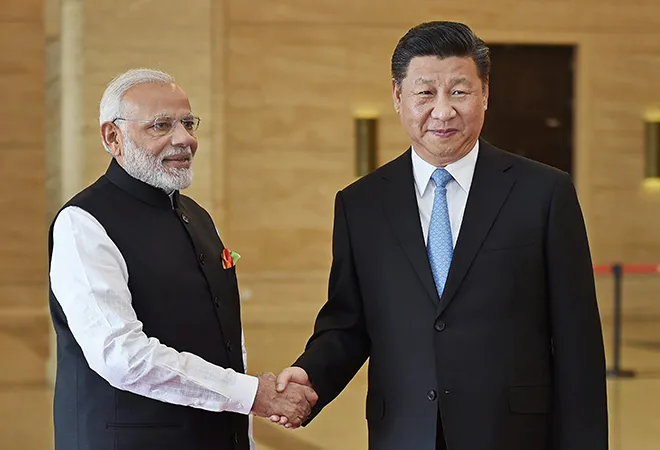Last November on the sidelines of the East Asia Summit in Manila, the Quadrilateral arrangement involving Australia, India, Japan and the US saw a revival as officials exchanged notes on regional and global security. It has been a remarkable turnaround in the prospects of an arrangement which had collapsed a decade ago under the weight of Chinese démarches. In 2017 it was an assertive Beijing that brought the four Indo-Pacific powers together to manage the externalities arising out of the scale and scope of China’s rise.
Challenging China
Despite an initial meeting, there has been a range of questions on the viability of the Quad arrangement, and specifically on its agenda given that the grouping has often been wary of explicitly annoying the Chinese.
But there are signs of emerging priority areas. Last week it was revealed that the four countries are working to establish a joint regional infrastructure scheme as an alternative to China’s Belt and Road Initiative (BRI). Though the plan is still in its nascent stage, it is clear that the normative order China is trying to construct in the economic sphere will not go unchallenged. As Australia’s Minister for Foreign Affairs Julie Bishop said recently in a media interview in London,“We want to work with China to ensure that their infrastructure investment is commercially sustainable, is transparent and adds to the economic growth that is so needed in our part of the world.”
It is clear that the normative order China is trying to construct in the economic sphere will not go unchallenged.
The Quad has expressed reservations on the BRI in its own ways. But the four countries have rightly recognised that merely opposing it will not advance their agenda given the hunger for infrastructure in large parts of the world. According to some estimates, developing nations in the Indo-Pacific itself need around $26 trillion through 2030 for their infrastructure needs. As a pet project of Chinese President Xi Jinping, the BRI is aimed at situating Beijing at the core of the global economy by building global transport links across the world. China’s ambitions in this regard have also kept expanding with its first official Arctic policy white paper which talks of a “Polar Silk Road.” The Quad nations will have to present their own model if only to underscore the normative differences between the Chinese and their approach. China with its BRI is providing a new economic template to the world, and it is important for those powers which view Beijing’s approach as top-down, opaque and self serving to pro-actively provide credible alternatives. The scale and scope of the Chinese economic footprint can only be tackled if the Quad nations combine forces. Unlike the military option, this is a softer side of the “Quad” engagement and its members are already undertaking connectivity projects around the world. India and Japan, for example, are working on an ambitious Asia-Africa Growth Corridor linking Southeast Asia to Africa. The idea of an Indo-Pacific “quad” has been much talked about but this will be the first concrete manifestation of the idea in operational terms.
Pushing back
The biggest concern about the BRI is that it is a means of cementing Chinese economic hegemony and, in the process, challenges the foundations of the extant liberal economic order. While underlining their support for the need for global and regional connectivity in principle, the Quad members have been pushing back. India’s opposition has been the strongest partly because the China-Pakistan Economic Corridor, which is a part of the BRI, passes through Pakistan-occupied Kashmir. India was the only major power which did not attend the BRI summit hosted by China last May. Japan has laid down specific conditions for its participation in the BRI even as it is looking to use its official development assistance to promote a broader “Free and Open Indo-Pacific Strategy” including “high-quality infrastructure”. Australia has challenged the principles which frame the BRI. US Defence Secretary Jim Mattis has suggested that “no one nation should put itself into a position of dictating ‘One Belt, One Road’.” After the US pulled out of the Trans-Pacific Partnership, raising apprehensions about America’s continued commitment to Asia’s future, infrastructure investment in the region will bring it back in the game.
Beijing has already expressed its unhappiness at the emergence of the “Quad” and will see moves to counter the BRI as an attempt to shift the balance of power in the wider Indo-Pacific. China’s worries will only increase as the combined might of these four powers is quite formidable. The possibility of major power coordination on managing global connectivity still remains a possibility but as more and more countries recognise the limits of Chinese approach, the Quad’s attraction will get even stronger.
This commentary originally appeared in The Hindu.
The views expressed above belong to the author(s). ORF research and analyses now available on Telegram! Click here to access our curated content — blogs, longforms and interviews.




 PREV
PREV


